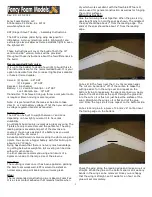
19
It is recommended that you regularly CHECK your wing, especially after a heavy period of use, after an
incident or after a long period of storage.
Storage and Transport
Always store all your flying equipment in a dry room, protected from direct heat. Your wing should be
dry before being packed away. Moisture, heat and humidity are the worst elements for damaging your
glider. Storing a damp glider in your car under the sun would be terrible for example.
If you land in salt water, you must first rinse it thoroughly with clean fresh water. Dry the wing completely,
preferably out of the sun, in the wind. Never use a hair dryer, etc.
Take care that no insects get packed away with the wing. They may eat the cloth and make holes in a
bid to escape. They can also leave acidic deposits if they die and decompose.
Transport the wing in the supplied bags and keep away from oils, paints, chemicals, detergents etc.
Cleaning
Any kind of wiping/scratching can damage the coating of the cloth. We recommend to not clean the
wing, but if you do have to, use a soft cloth dampened with a small amount of water and use gentle
movements little by little across the surface.
Wing Repairs
Always let a registered dealer, professional repair centre or the manufacturer carry out any major or
complex repairs, especially those near seam margins.
If you damage the sail:
If the rip is small and in the middle of a panel however you can fix it yourself. You’ll find all the materials in
the repair kit you need. The fabric can be simply mended with the sticky rip stop/spinnaker tape. When
cutting out the patches allow ample overlap of the tear and make sure both sides are different sizes.
Make sure to round off each corner of the patches.
You can find more information about repairing your wing on the Ozone website, including step by step
instructions with pictures.
IMPORTANT
Never pack away or
store your glider wet.
IMPORTANT
Never use detergent or
chemical cleaners.









































